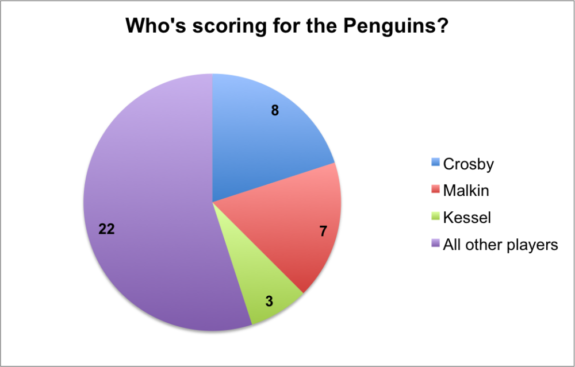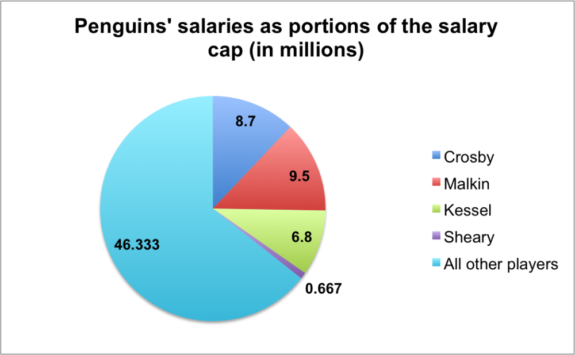The two goals Conor Sheary scored against the Edmonton Oilers on Tuesday night were important in more than just helping the Penguins to a single win — they showed the offensive depth further down the roster than just Pittsburgh’s biggest names.
Where Are Pittsburgh’s Goals Coming From?
The majority of the Penguins’ offense so far this season has come from their three star players. They’ve been scored by the two cornerstones of the franchise for the past seven years, Malkin and Crosby, as well as the Penguins’ recent high-profile acquisition from the Toronto Maple Leafs, Phil Kessel. Pittsburgh is using up an entire third of their salary cap on these three players.
So far this season, these players are proving they’re worth it. Early in the 2015-16 season, Pittsburgh was struggling to get its stars to produce. Crosby was so far down the NHL rankings in the first half of the season that he was not invited to the 2016 NHL All-Star game — a major snub for one of the league’s biggest names. Things are different now for the Penguins. Malkin and Crosby combined, are responsible for more than a third of the team’s goals this season, and when adding in Kessel, they represent almost half of the goals the Penguins have scored so far.

So why is it important that Sheary scored two goals against Edmonton last night? It’s important in a very practical sense: only a very small fraction of the Penguins’ salary cap is going to Sheary’s pay.
Sheary and the Salary Cap
NHL teams are governed by the salary cap and they have to be. It costs a lot to keep star players on the team, and the Penguins are currently juggling a few big names on the roster. This season is Sheary’s first starting in the NHL, so he can be paid a relatively smaller portion of the salary cap at less than $1 million in 2016-17.

If he starts to regularly put up numbers like he showed he could on Tuesday, he could be a huge benefit to the Penguins. It’s vital that some of the Penguins’ younger players step up offensively, both to take the pressure off star players like Crosby — who seem to perform best when not all the pressure is on their shoulders — and to offer some depth in the case of injury. The Penguins are lucky enough to be playing with a healthy lineup right now. Sheary himself just returned to the lineup after several games missed due to a high stick to the face. All the same, the strongest team is a team prepared for bad luck.
Sullivan’s Role in Sheary’s NHL Debut
Sheary is one of the reasons head coach Mike Sullivan’s arrival was so crucial for the Penguins last year. When Sullivan came to the NHL from the Penguins’ affiliate in the American Hockey League, he brought a few players up with him, including Bryan Rust, Matt Murray, and Sheary. These young additions to the roster are part of why the Penguins found success under his leadership.
Sheary currently plays about 12 minutes a game (a smaller amount compared to more established players, like Carl Hagelin, who averages around 16 minutes a game.) This season, we can expect to see his ice time increase as the Penguins attempt to take advantage of a goal scoring forward who currently isn’t costing them too much to keep.